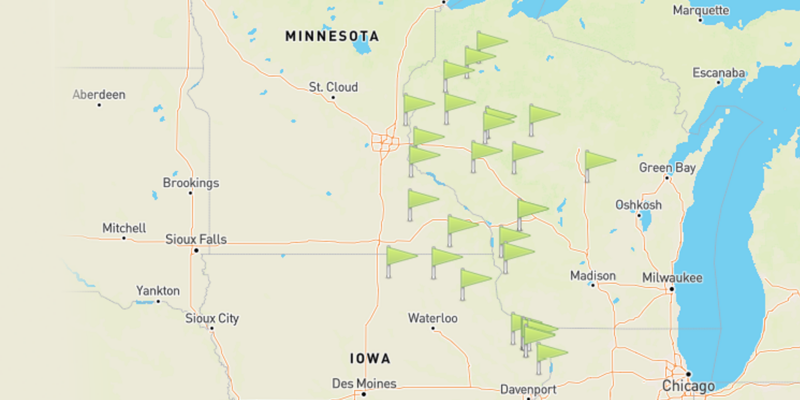Midwest Co-ops’ CHARGE EV Network Set To Double in Size

A regional electric vehicle (EV) charging network in the Midwest is opening up new opportunities for electric cooperatives to serve consumer-members while enhancing the bottom line.
The CHARGE EV network is the creation of more than 31 cooperatives spread across Wisconsin, Illinois, Iowa and Minnesota. The network has deployed more than 50 Level 2 and Level 3 charging stations. The addition of more distribution and generation and transmission cooperatives is expected to raise that number to more than 75 this year.
Creating a National EV-Charging Network Powered By Co-ops
“We want to create a national EV-charging network that's powered by electric cooperatives,” CHARGE EV Board Chair and Pierce Pepin Cooperative Services President and CEO Nate Boettcher said. “That's as simple as it gets.”
Users can locate charging stations on an interactive map at the CHARGE EV website and eventually on smartphone apps, such as PlugShare.
The initiative grew out of discussions among a group of Dairyland Power Cooperative members studying the effect of new energy innovations on cooperatives. A regional network could help alleviate consumer member “range anxiety.” EV drivers—particularly in rural areas—can’t count on finding a charger outside of urban areas and interstate highways.
“As a group of co-ops, we thought we could really get EV adoption going faster and get charging stations across our service territory,” Eau Claire Energy Cooperative President and CEO Lynn Thompson said. “We wanted to demonstrate that you can leave home and won't be stranded.”
To position cooperatives as the preferred provider of electricity to EV users, the network partnered with ZEF Energy Inc. to sell a line of metered residential and commercial chargers. The units can be branded with both CHARGE EV and the local cooperative’s name.

Co-ops Engage Members To Install Residential EV Chargers
Eau Claire is among those offering rebates to members who install a charger at home. These devices are “well priced” and also “smart”—there’s no need for a separate meter to track usage, Thompson explained.
“From the home charging perspective, we are working to minimize the impact on the generation system by shifting EV charging to our valleys,” Dairyland Power Cooperative Manager of Innovation and Efficient Electrification Jeffrey Springer said. “If we can keep home charging off-peak, we can accommodate a lot of EVs on the system before there is any need for added generation infrastructure.”
Network members have taken different approaches. Some are carefully sticking their toe in, while others have already deployed multiple units in their area.
Wisconsin’s Jackson Electric Cooperative is working with ZEF Energy to install a charger in its service area, Member Relations Manager Carol Blaken said. The cooperative is developing an EV strategy for its members. It purchased a Chevrolet Bolt EV to demonstrate the advantages of the vehicles.
“The criteria for success is not the number of EVs driven by members, but raising awareness about them and the role they can play in a more sustainable energy future,” Boettcher said.